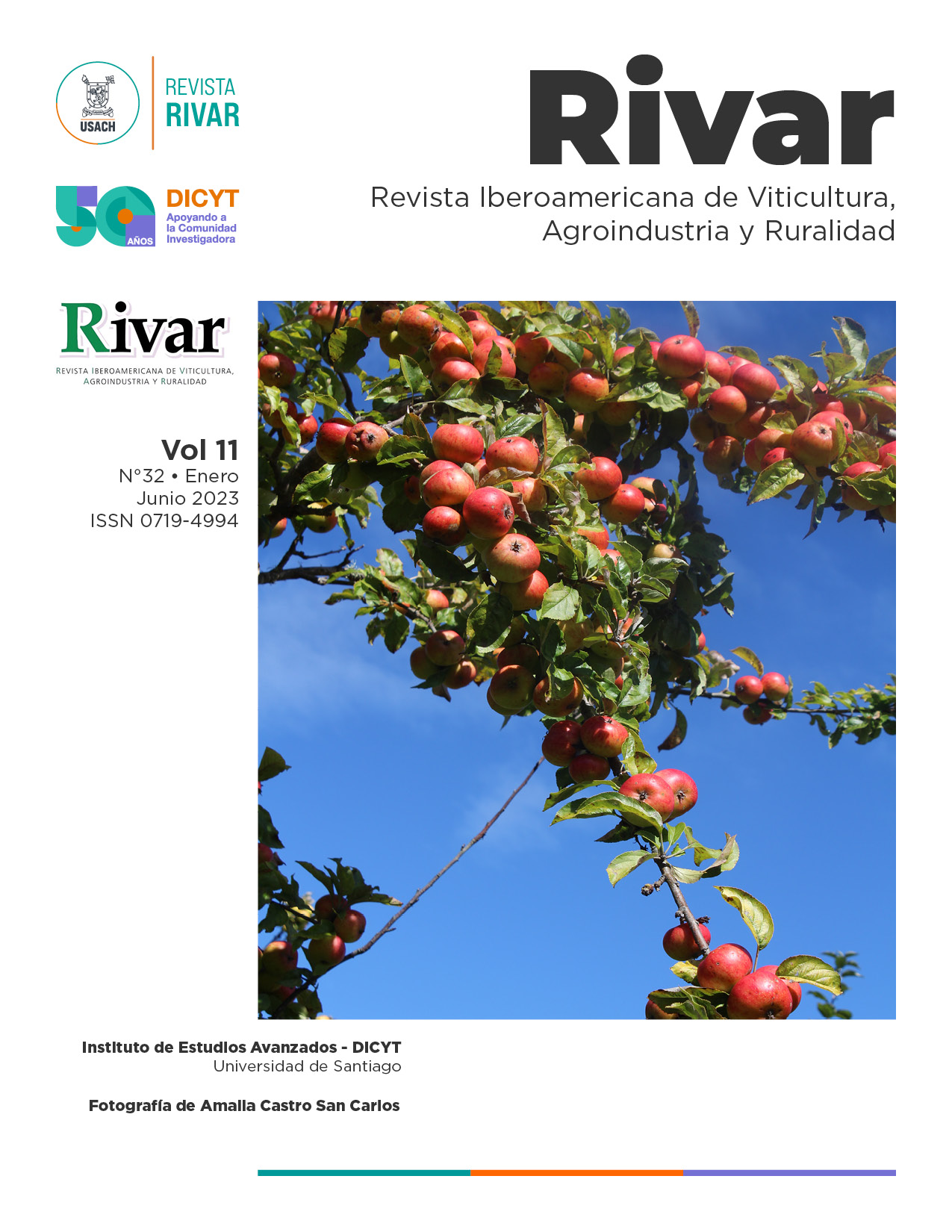Cider Culture and International Projection of Asturias
DOI:
https://doi.org/10.35588/rivar.v11i32.6065Keywords:
Asturias cider, diplomacy through wine, commodification, institutionalization, heritageAbstract
The Asturian Cider Culture was designated as the Spanish candidate before UNESCO declared an Intangible Heritage of Humanity. Cider represents the most identifying product of the region. However, beyond its own expression of heritage, its merit also lies in the wealth of knowledge and techniques transmitted from generation to generation. The social and economic value of this transmission, although, tends to be convenient for all social groups contained in the community. In the case of the cider culture, it is an integrating richness whose evolution represents a response to a changing environment and which contributes effectively when it comes to instilling a feeling of identity and continuity, also creating a link between the past and the present that can be decisive when it comes to guaranteeing a future. Therefore, its future depends on the behavior of those groups that know the rites, techniques, and customs transmitted to the social group.
Downloads
References
Álvarez Requejo, S. (2002). El Festival de la Manzana. En VV.AA. El libro del siglo XX. Villaviciosa. La Oliva-Cubera.
Álvarez Requejo, S., Díaz Campillo, E. y Palacios Valderrama, M. (1982). La manzana y la sidra en Asturias. Consejería de Agricultura y Pesca-Estación Pomológica de Villaviciosa.
Antuña Gancedo, E. (2019). La fiesta como fenómeno sociocultural. Asturias, 1937-1996. [Tesis de doctorado]. Universidad de Oviedo.
Burke, P. (2010). Hibridismo cultural. Akal.
Crabiffosse Cuesta, F. (2000). Valle, Ballina y Fernández, S.A. Historia de una empresa. Fundación José Cardín.
Dapena Fuente, E. (1998). Innovaciones técnicas en el XXI Festival de la Manzana. CIATA, Boletín Informativo, 9.
Díaz González, M. (2004). Asturias litografiada. Trea.
Fernández Montes, X. (2004). Nava y la sidra. Cultures, 3.
Francos Lauredo, A. (1997). La memoria compartida. Asturianos en Cuba. Azuzel.
Fuertes Arias, R. (1902). Asturias industrial. Estudio descriptivo del estado actual de la industria asturiana en todas sus manifestaciones. Imprenta de la Cruz.
García Álvarez, L.B. (2009-2011). Sidra y manzana en Asturias. Sociabilidad, producción y consumo (de la Guerra Civil a nuestros días). Estudio realizado para el Principado de Asturias como base documental de la candidatura de la cultura sidrera a Patrimonio de la Humanidad.
____. (2011). Comensalidad, sociabilidad y rituales de consumo. La espicha en Asturias en el primer tercio del siglo XX. Historia Social, 71, 21-40.
____. (2013). Sidra y manzana en Asturias. Sociabilidad, producción y consumo (1875-1936). KRK.
____. (2018). La sociabilidad sidrera durante el franquismo. Historia Social, 92.
____. (2020). Introducción a la historia de la sidra en Asturias. Cátedra Universitaria de la Sidra de Asturias. Universidad de Oviedo.
____. (2021). Los grandes festivales sidreros durante el franquismo. Rivar, 23(8), 90-106. https://doi.org/10.35588/rivar.v8i23.4947
Gómez Pellón, E. y Coma González, G. (1985). Fiestas de Asturias. Cajastur.
González Cobas, M. (1994). Sidra y turismo. En J.A. Fidalgo (Dir.), Sidra y manzana de Asturias. Prensa Ibérica.
Llanos, R. y Piñera, I. (2001). Gijón. Vida cotidiana. De posguerra a fin de siglo. GEA.
López Álvarez, J. (1994). Emigración y localismo: El club Allandés de la Habana. En P. Gómez (Coord.), De Asturias a América. Cuba (1850-1930). Ayuntamiento de Allande y Archivo de Indianos.
Naranjo, J. (1994). Presencia asturiana en Cuba. Siglo XX. En P. Gómez (Coord.), De Asturias a América. Cuba (1850-1930). Ayuntamiento de Allande y Archivo de Indianos.









